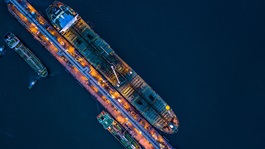In any construction project there are an infinite number of risks. Typically the risks associated with a project will be determined by its nature, size and complexity. The need to insure against these risks has created a web of insurance policies, directed at the construction industry.
While it is sometimes difficult to discern all risks associated with a project particularly at its outset, parties are well-advised to engage with each other, their brokers and insurers to identify risks and allocate them appropriately in the contract documents which will regulate the responsibility to insure and the rights and obligations of parties. It is important that brokers make sure that they have sight of the contract documents before selling cover, as failure to do so may result in a broker selling cover for a risk that the insured is not likely to face or worse, real risks may be uninsured.
The typical policies are:
Contractor’s All Risk Insurance (CAR)
CAR covers the risk in the works. This policy covers “all risks” but the true extent of the cover under these policies is identified by the events specifically excluded. CAR will generally exclude consequential loss, wear and tear, defects and design.
Contractor Plant Insurance (CPI)
CPI insures construction plant and equipment as a result of unforeseen and accidental loss.
The advantage of the CPI is that it may cover plant which is to be used on different sites for multiple projects and therefore may cover the plant or machinery on a project site and while in transit.< /p>
Important extensions to consider are recovery of immobilised plant, damage to surrounding property and air freight for replacement equipment, all of which could give rise to significant expenses for the insured.
Public Liability Insurance (PLI)
PLI covers third party injury or loss. This insurance covers the insured’s legal liability to third parties. It will generally cover the insured for liability arising out of the insured’s own negligent conduct but not for intentional or reckless conduct.
One needs to be mindful of legal liability arising out of contractual undertakings with suppliers or subcontractors. Suppliers often exclude liability in their standard trading conditions. Acceptance of this by an insured may invalidate a policy.
Professional Indemnity Insurance
PI insurance, as it is known, is another example of legal liability insurance and offers cover for negligent errors by professionals (typically architects, engineers and the like) in the performance of professional duties. A failing by a professional however, may not necessarily point to negligence. The test typically used to assess professionals for the purposes of ascribing liability is whether another professional in the very same position as the insured would have made the error.
When you need one policy to ‘talk’ to a project
Given the growing sophistication with which projects are developed nowadays and the possibility of some risks going unnoticed in this milieu, construction project policies have become a popular choice of policy for insurers and insureds alike. This type of policy is a combination of various construction policies under the banner of a single policy in order to facilitate a smooth interface among the insureds under the policy and for better control over project insurance, amongst other things.
These policies are typically project-specific and will require specialised brokers and underwriting. A well designed project policy is one that balances the interests of a project as a whole together with the individual interests of the multiple insureds. This is often times no easy task when one considers that multiple insureds under a single policy may have competing interests.
When more is required
Basic insurance cover may be supplemented with ancillary insurance. Again, this would be indicated by the nature of the “build”. These may include marine cargo insurance which insures imported components used in the works and would typically cover components from the manufacture’s warehouse to the project site (ship, rail and road). Sasria insurers for losses sustained from civil commotion and strikes.


